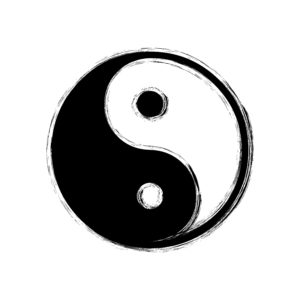
Digitalisation gives you the tools for solving the eternal paradoxes of management
Atlas Copco, one of Sweden’s most successful companies, is a long-time advocate of a decentralised organisation, where responsibility is distributed deep into individual business units, enabling them to conduct their own business in their own way.
Over the last few years, two of the biggest companies in Sweden, Sandvik and Volvo, have begun to leave a highly centralised management in favour of decentralised business responsibility.
Does that mean this issue is settled once and for all? Do we now have the final verdict? Probably not. We are talking about one of many eternal conflicts with which management has to struggle. By centralising power and decision making, we can benefit from the advantages of standardisation, uniform processes and shared investments – and by so doing, save time and money. On the other hand, decentralisation enables us to improve the level of responsibility locally, see faster, and often wiser, decisions based on closeness to customers, the market and an understanding of the conditions of our own operations. So, which approach is really the best?
Probably the question is phrased the wrong way. The conflict between centralising and decentralising is really an illusion. It is not possible to choose one of these management strategies with any degree of success, because they are two sides of the same coin.
We are dealing with a paradox, not a conflict. The two sides of a paradox may seem contradictory but, in reality, they are mutually dependent on one another. The ancient Chinese philosophers expressed this as the symbol of Tao. Yin cannot exist without Yang. Nor darkness without light. Valleys without hills. Breathing in without breathing out.

We find the same mutual dependence in many of the paradoxes of companies. Should we focus on time to market or quality? Cost or quality? Growth or profitability? Most experienced managers know that you cannot make a once and for all decision on these issues. What is needed is to find a mature, clearheaded and dynamic balance. We need to find our feet in a continuously ongoing balancing act, where we focus on one for a while, and then on the other, never forgetting either side for any significant time. Any crucial imbalance has to be swiftly corrected.
A good illustrating metaphor is the seeming simplicity of human walking. If we look closely, we can observe that when we walk, we are actually out of balance all the time. At one moment we are resting on the right leg and the next moment the left leg. But everything progresses in a coherent, balanced interplay between right and left. In this way, we move forward with a dynamic balance.
Likewise, we need to find a dynamic balance between centralising and decentralising. Too much of one and too little of the other, and the company will limp and jerk forward, just like a person who has one leg shorter.
We need to understand that there are great benefits to be gained from centralisation, but there are also downsides. The same is true about decentralisation. We have to learn to use the advantages that both these management strategies bring, while at the same time being on the alert for the pitfalls and drawbacks they both carry.
Most companies tend to be indecisive regarding this paradox. In Integ Partner, our experience is unequivocal. Most companies need to centralise more, but even more importantly, they need to decentralise much more than they currently do.
Decentralising should not remain at local business unit level only. Real power, decentralised, that gives local people influence over their own work, will build commitment and liability in the company. They can then be fully human and an adult at work. To centralise decisions that co-workers know full well they can make faster and wiser themselves, is a sure recipe for people to feel diminished and treated like children. That’s when it seems reasonable to move onto the side lines and spend time slandering management at the coffee machine – management that insists on making decisions about issues in which they obviously lack both competence and sense.
Today’s era of digitalisation provides us with new possibilities to centralise, while at the same time providing us with the opportunity to decentralise even more.
Envisage a centralised digital solution that can provide, for example, a salesman in the company with full access to the stock balance, delivery time and cost to the customer, while at the same time providing him with a toolbox where he can keep track of products and customers he should prioritise. That will be a salesman who has more control over his work. In a highly practical way, the conflict between centralisation and decentralisation has been bridged by a central decision to invest in a new digitalised sales toolkit, which at the same time empowers local salespeople.
This makes it easier for the salesperson to undertake powerful initiatives based on the market he or she knows best. The salesperson can utilise his/her time to do things that really make a difference, instead of endlessly hunting for the data needed to finalise an order.
The Yin and Yang symbol shows how failure always carries the seed of success, symbolised by the little black dot in the white field and vice versa. But at the same time it shows the opposite – how success also carries the seed of failure.
If we translate this to today’s business world, we can see in the example of, for instance, Nokia, how overblown self-esteem can carry the seed of a great decline. In the same way, the exaggerated centralisation going on over many years, in both Sandvik and Volvo, was carrying the seed of its opposite. It will be exciting to watch and see if the new management will be wise enough to push for a far reaching decentralisation, but also wise enough to balance that with a healthy and wise use of centralisation.
Here are some initial questions along the journey towards a more balanced company in terms of centralisation/decentralisation:
- Can you move the power to take decisions closer to the customer?
- What could your company gain by doing so?
- In what areas can you really gain from shared standardised solutions?
- Do you have any centralised solutions that you would do better without?
By: Lasse Ramqvist and Mats Eriksson
Back